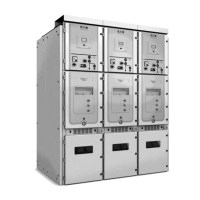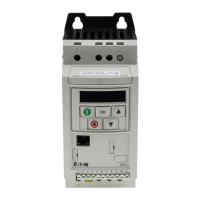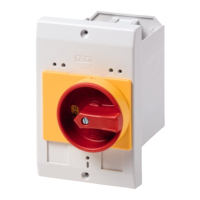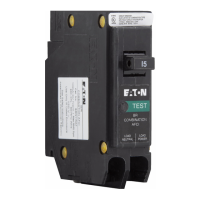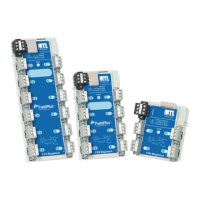5
2 PXR user interface
PXR TRIP UNITS FOR POWER DEFENSE MOLDED CASE CIRCUIT BREAKERS MN012007EN June 2018 www.eaton.com
2 PXR user interface
The PXR trip unit interface is common across all frame sizes of the Power Defense family of
circuit breaker frames. This common user interface ensures rapid configuration and makes it
easier to train service personnel. In each frame size, the elements of the interface are easily
recognized even when compressed into smaller fames or mounted horizontally.
The PXR 10 has the simplest user interface (UI), including the essential protection settings
and status. The PXR 20D and PXR 25 have the richest UI, providing setting and operational
information at a glance. Refer to the front panel illustrations of the PXR 10, PXR 20,
PXR 20D and PXR 25 to determine which user interface elements are provided.
There is a setting for the PXR 20D and PXR 25 to rotate the text in the display for breakers
that are mounted horizontally in a panelboard.
2.1 Key interface elements
2.1.1 Status indicator
All PXR trip units have an indicator in the top left labeled “STATUS”. During normal opera-
tion, this indicator blinks green (on and off approximately once each second), indicating that
the trip unit is operating normally.
The status indicator blinks red if the trip unit detects an internal problem. This indicates a
problem with the trip actuator coil, a firmware error, or a mechanism error. Take immediate
action to replace the trip unit or breaker.
When the status indicator remains off, there is no auxiliary power applied or insufficient
primary current to power the trip unit. PXR trip units in MCCB will self-power at 20% of the
circuit breaker frame In.
2.1.2 USB – test and configuration port
The lower right corner of all PXR trip units has a standard micro-B USB connector. PXPM
software uses the USB port to configure, test and monitor the trip unit. Download the
installation package for PXPM software from www.eaton.com/pxpm.
A USB cable connection from a host PC will power the trip unit when the trip unit is
not harvesting sufficient energy from the mains or there is no auxiliary power applied.
Commercially available battery packs can also power the trip unit. This connection is
intended for temporary use while a user is configuring, monitoring or testing the trip unit.
2.1.3 Pickup/cause-of-trip indicators
All PXR family trip units record the cause-of-trip (CoT) in memory. The CoT is available by
using PXPM software and via the communication networks.
There are four pickup/cause-of-trip indicators labeled “LONG”, “SHORT”, “INST”, and
“GROUND” on all except the PXR 10. The appropriate indicator blinks when a current level
pickup setting is exceeded. After a trip event, the appropriate indicator flashes (0.25 second
on, three seconds off) and is annunciated on the display.
•
“LONG” – Long delay or over temperature
•
“SHORT” – Short delay
•
“INST” – Instantaneous, override or maintenance mode
•
“GROUND” – Ground fault
2.1.4 Reset
The button labeled “RESET” can be pressed using a small tool. When pressed, it clears the
cause-of-trip indicators, clears any latched alarms on the configurable relays and clears the
ZSI “check mark” on the display (illuminates after a ZSI input signal is detected).
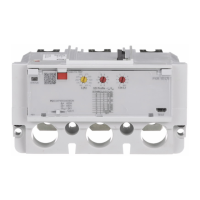
